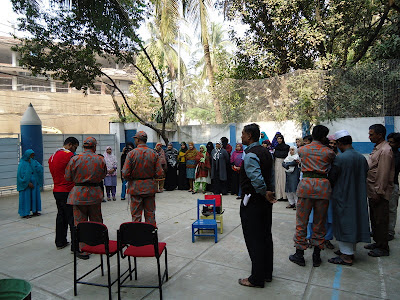Thursday was our art and crafts class and my project was to teach them origami double boat. We all know that learning origami helps in development of eye and hand co-ordination. So mixing of origami with drawing and maths results in an interesting and interactive activity.
Normally the origami boat creating process is difficult to follow for my class kids (age group 4 plus) and I try to find the ways to make it easier.

How to create double boat?
This unique dual hulled traditional boat is called 'catamaron'. If you can make origami house then you can easily make this fold. It is made by inside reverse fold. You need to learn valley and mountain-fold.
Link: 'Make traditional catamaron boat'
 You can see the process of creating crafts with double boat from the pictures. First they fixed the boat at their art book. Following pictures show the cut and paste (strips of light, and deep blue color poster paper)
You can see the process of creating crafts with double boat from the pictures. First they fixed the boat at their art book. Following pictures show the cut and paste (strips of light, and deep blue color poster paper)I asked them to add double clouds at sky. A child came up with idea of drawing a rainbow which was liked by all kids and they followed it.
My students love to work at crafts projects. I feel that they may forget the 'addition with doubles' but they won't forget making or creating 'double boat'.
I hope to share more experiences with my readers. So keep in touch and don't forget to submit your comments.
More ideas while teaching doubles:
 |
| This is simple double house fold which is easier for young kids to learn and drawing makes this origami project more interesting. |
 |
| This is also a combine work of maths and crafts. Kids loved creating this crafts and they were happy to do addition sums while doing this activity. |
 |
| Finished work |
* Learn origami for the development of creative skills










.jpg)




